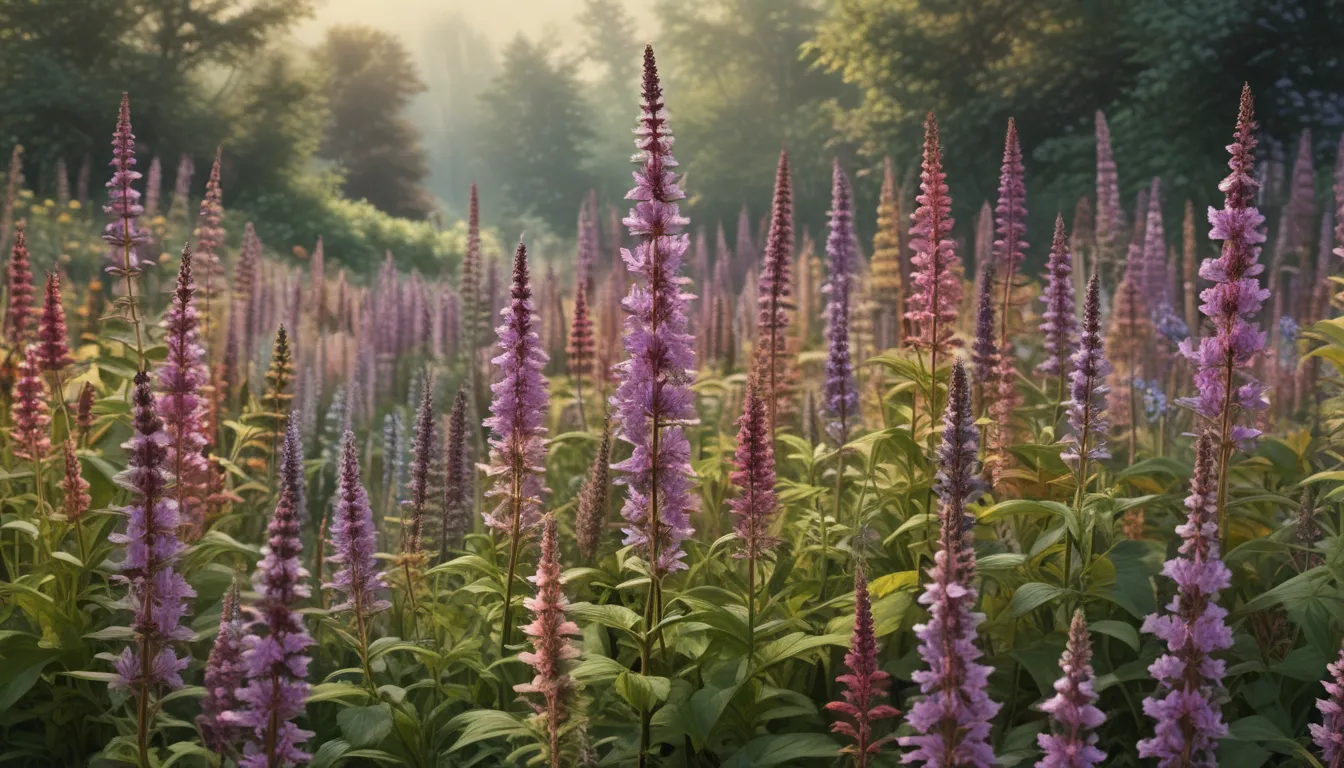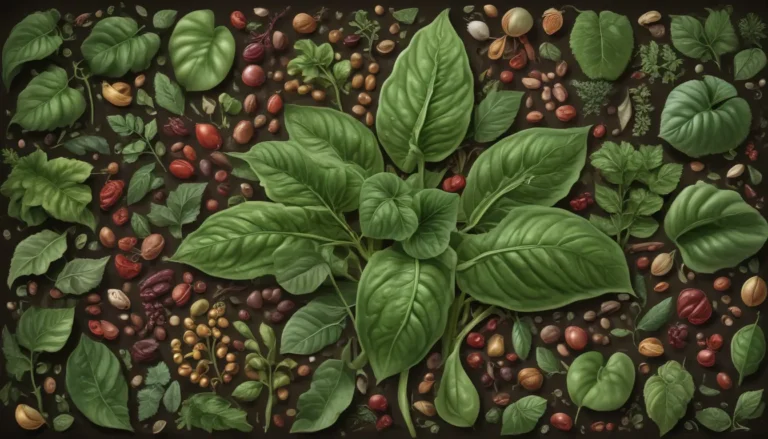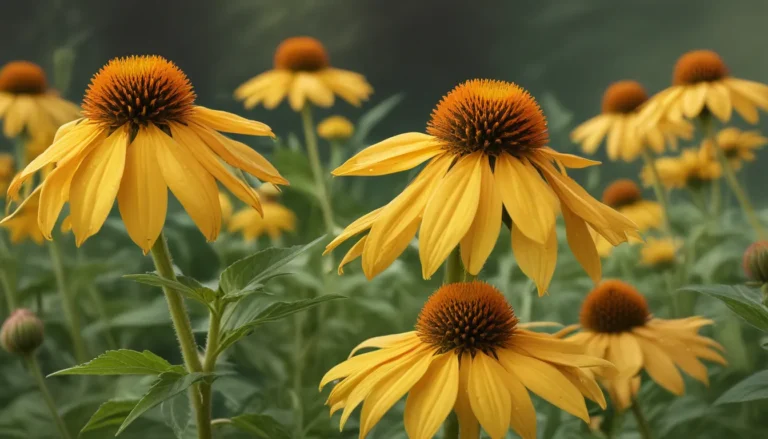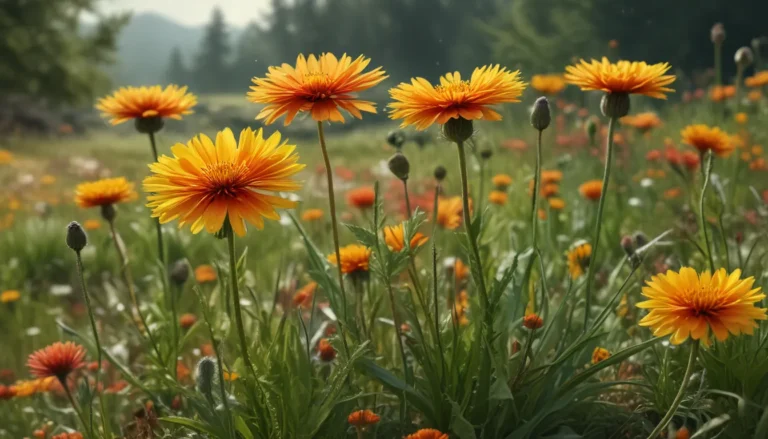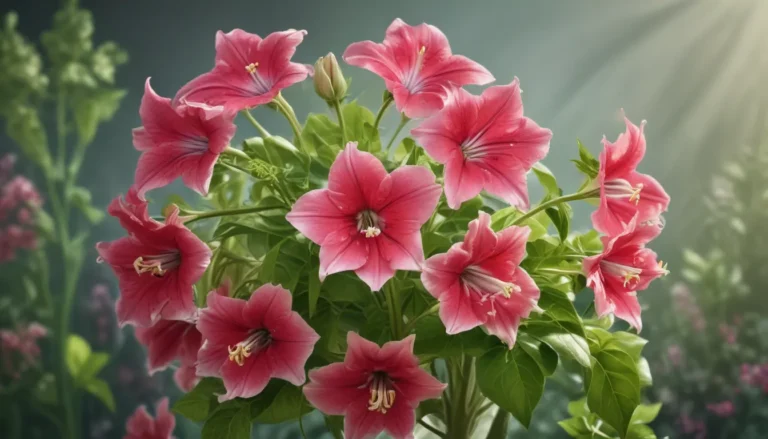The pictures we use in our articles might not show exactly what the words say. We choose these pictures to make you interested in reading more. The pictures work together with the words but don’t take their place. The words still tell you the important facts.
Are you ready to delve into the captivating world of Agastache, also known as "giant hyssop"? These vibrant flowering plants are sure to steal the hearts of any plant enthusiast with their stunning appearance, unique characteristics, and diverse range of species. Whether you're a seasoned gardener or simply curious about these mesmerizing plants, buckle up as we explore 17 fascinating facts that make Agastache truly special.
Agastache: A Vibrant Perennial Delight
Let's start with the basics - Agastache is a vibrant flowering perennial that belongs to the mint family (Lamiaceae). With its stunning array of colors and aromatic foliage, it is a popular choice among gardeners and horticulture enthusiasts. Native to North America and Asia, Agastache offers a striking visual appeal that is hard to resist.
The Many Names of Agastache
Agastache goes by many names, including Hyssop, Giant Hyssop, Anise Hyssop, and Hummingbird Mint. These names reflect its unique characteristics and its remarkable ability to attract hummingbirds and other pollinators to the garden. With a name as enchanting as its blooms, Agastache is a plant that truly stands out.
A Vibrant Spectrum of Colors
From shades of purple, pink, and blue to vibrant orange and yellow, Agastache boasts a stunning range of colors that can brighten up any garden. Not only do these colorful blooms add beauty to your outdoor space, but they also attract butterflies and bees, adding a touch of magic to your garden.
An Aromatic Delight
One of the most delightful features of Agastache is its lovely fragrance. The leaves and flowers of this plant emit a refreshing aroma reminiscent of anise or licorice. This not only enhances the overall appeal of the plant but also acts as a natural deterrent for certain garden pests, making it a win-win for your garden.
A Haven for Pollinators
Thanks to its brightly colored flowers and abundant nectar production, Agastache is a favorite among pollinators, including butterflies and hummingbirds. By planting Agastache in your garden, you can support local pollinator populations and enjoy the delightful presence of these winged visitors.
Thriving in Well-Draining Soil
Agastache prefers sandy or loamy soil that is well-draining. It's important to avoid excessively wet soil, as this can lead to root rot. To ensure optimal growth, consider amending heavy clay soil with organic matter to improve drainage and provide the best environment for your Agastache plants to thrive.
Drought-Tolerant Beauty
Once established, Agastache exhibits excellent drought tolerance, making it a perfect choice for water-wise gardens and landscapes. This low-maintenance plant can withstand dry spells and requires minimal watering, allowing you to enjoy its beauty without the hassle of constant maintenance.
Long-Lasting Blooms
From mid-summer through fall, Agastache puts on a show-stopping floral display that adds a burst of color to your garden when many other plants begin to fade. Its long-lasting blooms are a true delight for any garden enthusiast, providing beauty and charm throughout the growing season.
Medicinal Marvels of Agastache
In addition to its visual appeal, Agastache also offers medicinal properties. Traditionally used for its essential oils that possess antimicrobial, anti-inflammatory, and digestive properties, Agastache has a long history of use in herbal medicine. As always, it's recommended to consult a healthcare professional before using Agastache for medicinal purposes.
A Natural Deer Repellent
If you're looking to keep deer and other grazing animals at bay, Agastache is here to help. With its strong scent that repels deer, this plant can be a valuable addition to your garden, especially if you live in an area with abundant wildlife. Enjoy the beauty of Agastache without worrying about unwanted visitors.
Low-Maintenance Charm
Once established, Agastache is a low-maintenance plant that thrives with minimal care. Resilient, disease-resistant, and not requiring frequent fertilization, this plant is a breeze to grow in your garden. Regular deadheading can prolong blooming, while dividing the plant every few years helps maintain its vigor.
A Cut Flower Favorite
The vibrant and long-lasting blooms of Agastache make it an excellent choice for cut flower arrangements. Whether adding color and fragrance to bouquets or providing unique form and texture to floral compositions, Agastache is a versatile and eye-catching addition to any arrangement.
A Haven for Beneficial Insects
In addition to attracting butterflies and hummingbirds, Agastache also brings in beneficial insects like ladybugs and lacewings, which help naturally control garden pests. By promoting a balanced ecosystem and reducing the need for harmful pesticides, Agastache plays a vital role in creating a thriving garden environment.
Culinary Adventures with Agastache
Some varieties of Agastache, such as Agastache foeniculum, offer edible flowers and leaves that can be used in culinary applications. From salads to teas, the licorice-like taste of Agastache adds a unique flavor twist to dishes, making it a delightful addition to your culinary creations.
Herbal Medicine Heritage
With a long history of use in herbal medicine by Native American tribes and herbalists, Agastache has been utilized to alleviate digestive issues, relieve coughs and sore throats, and promote relaxation and overall well-being. Explore the therapeutic properties of Agastache as you incorporate it into your herbal remedies.
A Companion Plant Extraordinaire
Agastache isn't just a beautiful addition to your garden; it also benefits nearby plants by attracting pollinators and beneficial insects. Additionally, it acts as a natural pest repellent for some common garden pests, making it an excellent companion plant for vegetables and other flowering perennials.
Easy Propagation for All
Whether through seed sowing or division of established plants, Agastache is relatively easy to propagate. This allows gardeners to expand their Agastache collection or share this beautiful plant with fellow gardening enthusiasts, spreading the joy and beauty of Agastache far and wide.
Embrace the Beauty and Benefits of Agastache
In conclusion, Agastache is a versatile, visually appealing, and multi-purpose plant that adds beauty, fragrance, and ecological benefits to gardens. Whether you're drawn to its vibrant colors, tasty culinary applications, or soothing medicinal properties, Agastache is sure to bring joy and fascination to any garden setting. Explore the wonders of Agastache and discover the beauty and benefits it has to offer for yourself.
Discover the Magic of Agastache
With its vibrant flowers, delightful fragrance, and array of medicinal and culinary uses, Agastache is a plant worth exploring. From attracting pollinators to withstanding drought conditions and serving as a natural pest repellent, Agastache offers a wealth of benefits for your garden and beyond. Whether you're a gardening enthusiast looking to add color and diversity to your garden or someone interested in the therapeutic properties of plants, Agastache is a versatile and valuable plant to have. Dive into the enchanting world of Agastache and let its beauty and benefits mesmerize you.
FAQs
-
How do I care for Agastache? Agastache is a relatively low-maintenance plant that thrives in well-draining soil and full sun. Consistent watering until established, pruning, and deadheading can promote continuous blooming.
-
Can I grow Agastache in containers? Absolutely! Agastache can thrive in containers with good drainage and well-draining potting mix in a sunny location. Remember to water as needed to keep your container-grown Agastache healthy.
-
Are Agastache flowers edible? Yes, Agastache flowers are edible and can be used as a garnish or added to various dishes and beverages for a unique culinary twist.
-
Can Agastache attract pollinators? Indeed, Agastache is highly attractive to pollinators, especially bees and butterflies, thanks to its colorful flowers and aromatic qualities that draw beneficial insects to your garden.
-
Does Agastache have medicinal properties? Yes, Agastache has a history of use in traditional medicine for its antimicrobial, anti-inflammatory, and digestive properties, making it a valuable herb in herbal remedies and teas for overall wellness.
Intrigued by the captivating world of Agastache? Embrace the beauty, fragrance, and benefits of this remarkable plant as you invite it into your garden and discover its enchanting allure firsthand. Happy gardening!
